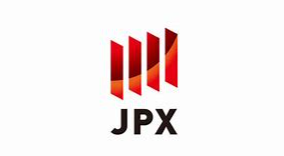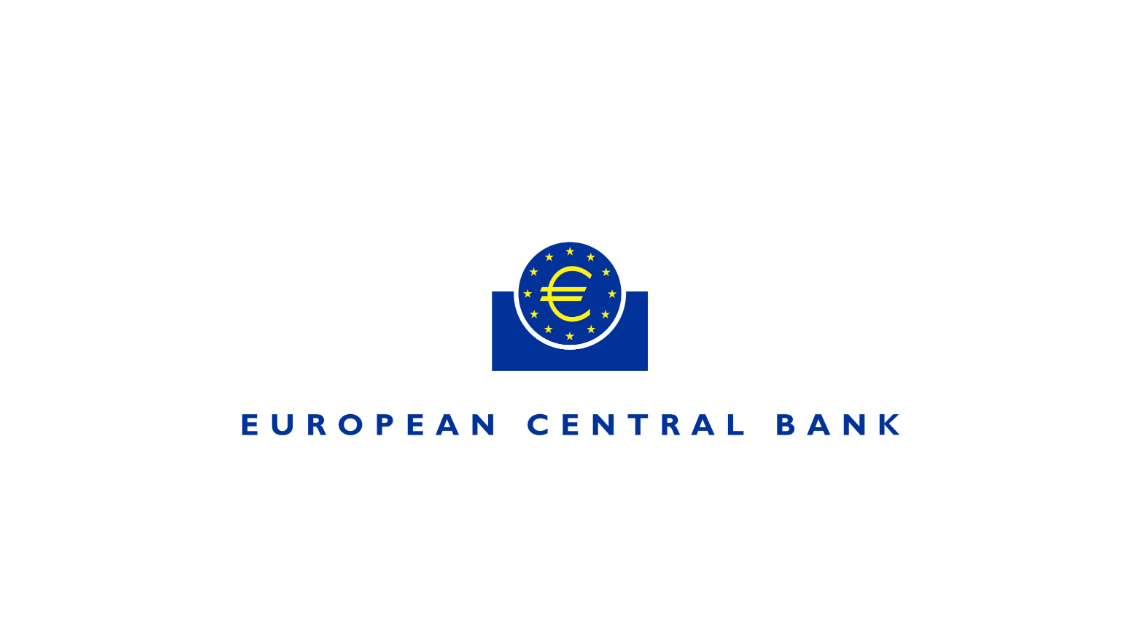Capital Markets Priorities in a Dynamic Landscape
Mr Walt Lukken, President and CEO of the Futures Industry Association (FIA)
Mr Bill Herder, Head of Asia-Pacific of the FIA
Distinguished guests,
Ladies and gentlemen,
1. Good morning. Thank you to the FIA for inviting for me to speak at this year’s Asia Derivatives Conference.
2. As we gather here today, I would like to take this opportunity to speak on some of the recent trends we are observing and provide an overview of MAS' upcoming regulatory priorities relating to the capital markets.
Recent Trends and Developments
Macroeconomic Uncertainty has Risen
3. Since the onset of the Covid-19 pandemic, the global macroeconomic landscape has been uncertain, and the recovery has been uneven. In the past year, macroeconomic uncertainty remains elevated with bouts of volatility observed in the financial markets, underscoring concerns about potential downside risks to growth and upside risks to inflation.
4. In the meantime, geopolitical uncertainties have continued to persist, with ongoing conflicts in Ukraine and the Middle East as well as potentially mounting trade tensions.
5. Despite such a backdrop, derivatives markets in 2024 have performed well and continued to provide an efficient mechanism for risks to be priced, managed and transferred.
·More than 177 billion exchange-traded futures and options contracts have been traded from January to October this year. This has already exceeded the 137 billion contracts for the whole of 2023.[1]
·In Singapore, we have seen a similar trend, although not in the same magnitude. We saw increased derivatives trading on our exchanges, with the number of contracts traded in the first three quarters of the year increasing by 10.5% compared to the same period last year.[2]
6. With economic and geopolitical uncertainty likely to remain elevated as we go into the new year, well-functioning derivatives markets will continue to play a critical role in supporting efficient capital allocation and price discovery. I will speak a bit more later on the regulatory response to this.
Growth of Non-Bank Financial Intermediaries (NBFIs)
7. Let me touch a bit about what we observe within the financial system, where we have been seeing notable shifts in its composition. In the last decade, the global financial system has evolved from being banking-focused to one that is increasingly dependent on market-based intermediation. Today, almost half of global financial assets are held by the non-bank financial intermediaries (NBFI) sector.[3]
8. And we in the regulatory community have been paying greater attention to the risks posed by NBFIs to the global financial system. For instance, there is the COVID-induced “dash for cash” in 2020, the Archegos market disturbance in 2021, and the nickel market disruption in 2022. These incidents highlight potential vulnerabilities in the NBFI sector due in part to liquidity, leverage, as well as concentration risks. They underscore the need to strengthen the resilience of the NBFI sector.
9. The Financial Stability Board (FSB) has since undertaken a comprehensive work programme to analyse and address the risks posed by NBFIs. Areas that the FSB and other standard setting bodies like the International Organisation of Securities Commissions (IOSCO) are looking into include:
·Enhancing margining practices in centrally and non-centrally cleared derivatives markets to enhance market participants’ liquidity preparedness; and
·Addressing vulnerabilities associated with NBFI leverage.
10. In particular, the FSB and standard setting bodies are currently working on policy proposals to better monitor and address financial stability risks arising from NBFI leverage. FSB's work has shown that hedge funds that typically pursue macro and relative value strategies, have displayed high levels of synthetic leverage through derivatives positions. Large hedge funds also obtain their borrowing across several prime brokers, which can further introduce concentration risks and hidden leverage into the financial system.[4] If not properly managed, this build-up of leverage could propagate strains and amplify shocks the financial system during stress events.
11. As we work on these proposals, we encourage the industry to continue to actively contribute your feedback and insights to the consultations. For instance, given the diversity in entity types within the NBFI sector, there is a need for observations from the ground up. The way stress is propagated across the financial system differs, depending on the size, activity and characteristics of the type of entity that we are dealing with. We will need feedback from you to do our jobs better. In Singapore, within the domestic financial system, MAS has, based on our observations and market feedback, placed focus on two key segments within the NBFI sector, namely, insurers, due to their size and importance to Singapore's financial system, as well as selected types of investment funds, depending on their liquidity and leverage profiles.
New Frontiers: Technology
12. Let me now turn my focus to technology, where a powerful wave of change is coming. Since the days of open outcry trading decades ago to the current electronic trades that take place within milliseconds, technological advances have been a driver of change for financial markets, increasing efficiency, transparency and accessibility in the industry. Looking ahead, frontier technologies will continue to transform and shape the industry. I will not go through them in detail but let me just highlight three areas in brief.
·First, tokenisation, enabled by distributed ledger technology (DLT), has demonstrated its potential to transform the way assets are exchanged, settled and cleared. The way markets are intermediated will also change if this takes off.
·Secondly, as we are all aware, there is the advent of generative AI. Its ability to scan and make sense of vast amounts of unstructured information has the potential to very significantly increase the efficiency of financial markets.
·Third, there is the superior processing capability quantum technology, which can exponentially transform risk management, trading, portfolio optimisation, and cybersecurity.
13. These are positive developments, and as a regulator, we remain committed to a technology-neutral approach. This means allowing for purposeful innovation to take place while making sure that the attendant risks are addressed and managed well.
Increased Risks from Cyber, IT and Operational Disruptions
14. Having said that, the increasing use of technology in the financial sector raises new vulnerabilities. Notably, we are seeing increased risks arising from cyber, IT and operational disruptions, particularly as the technology and financial ecosystems become more interconnected.
15. The IMF, in its April 2024 Global Financial Stability Report, noted that the number of reported cyber incidents has doubled since the onset of the COVID pandemic, with almost one-fifth of all cyber incidents affecting financial firms.[5] The average annual cost of cybercrime is also expected to increase from $8.4 trillion in 2022 to more than $23 trillion in 2027.[6] Coupled with a further digitalization of financial markets, the onslaught of cybercrime within the financial sector is likely to persist in the coming years, highlighting the importance of cybersecurity.
16. The recent Crowdstrike disruption has also demonstrated the potential spillover effect into the financial sector from non-financial service providers. There is growing reliance of financial services firms on a small group of service providers. This has become an increasing source of risk. Take cloud services for example, where the top three major cloud service providers account for almost two-thirds of the global market.[7] Such concentration risks give rise to single points of failures, which have, in turn, made the financial sector more vulnerable to cyberattacks and IT disruptions from not just within the financial sector, but also from sectors that deliver services to it.
17. While it may not be possible to predict or prevent every cyber, IT and operational disruption, the industry’s ability to respond and recover from such disruptions will be of increased importance in the current operating landscape.
MAS’ Regulatory Priorities
18. Now, let me turn to some of MAS’ priorities in the capital markets in response to some of the developments that I have just mentioned, as well as other focus areas.
·In the capital markets, MAS’ vision is to be a trusted and leading regulator; and to partner with our stakeholders to uphold fair, purposeful and orderly market outcomes.
·Guided by this vision, our three key priorities for the capital markets are:
·Strengthening safeguards to address heightened risks to market integrity;
·Reinforcing Singapore’s position as a trusted international financial centre; and
·Enhancing our regulatory frameworks to keep pace with industry developments
·I shall elaborate on each of these priorities in turn.
Strengthening Safeguards to Address Heightened Risks to Market Integrity
19. First, given macroeconomic uncertainties and heightened risks to market integrity,
·We will continue to place focus on the supervision of our central counterparties (or CCPs). CCPs play a crucial role in maintaining financial stability and mitigating the impact of the failure of a market participant. Let me make three broad points on this.
·We have (and will continue to) place significant focus on the margining, crisis, and default management practices of our CCPs, to ensure that their practices are sufficiently robust and effective.
·At the same time, we will continue to contribute to international work on enhancing margining practices for centrally cleared markets. The goal is to improve the transparency of initial margins, and streamline variation margin processes and reduce liquidity burden for market participants while ensuring sufficient resiliency.
·MAS will look to engage our CCPs on the implementation of these practices once they have been finalised.
·Next, we will continue to work with our regulated institutions to enhance their technology and operational resilience.
·We will be updating our Technology Risk Management (TRM) Notice to incorporate insights from recent major IT disruptions. We will look to enhance resilience standards in the capital markets, as well as across the wider financial sector. The plan is to conduct a public consultation on the proposed revisions to the TRM Notice in Q2 2025.
·MAS will also tap on our newly established Cyber and Technology Resilience Expert Panel to advise us on strategies and measures to enhance the technology and cyber resilience of our financial sector. The inaugural meeting is scheduled to take place in the first half of 2025.
·MAS will also undertake to collect more data to help analyse risks stemming from the fund management sector.
·We have started work to improve the frequency and granularity of data collection, to better analyse liquidity and leverage risks associated with the funds managed by licensed fund managers.
·This fund level information collected will also feed into our macroeconomic surveillance work to highlight where the interconnections are within our financial system.
Reinforcing Singapore’s Position as a Trusted International Financial Centre
20. Our second key regulatory priority is to reinforce Singapore’s status as a trusted international financial centre in our fight against money laundering and terrorism financing (ML/TF) risk.
21. MAS has been working together with the Ministry of Home Affairs and the Ministry of Finance to review Singapore’s anti-money laundering (AML) framework. We recently jointly published Singapore’s National AML Strategy. On MAS’ part, we have also published a number of guidance papers to guide the industry on the implementation of AML/CFT requirements and to share our supervisory observations.
22. In 2025, MAS will introduce a new AML/CFT Notice for Singapore-incorporated organised market operators. In recent years, MAS has observed an increasing trend where organised market operators are starting to allow investors who are not regulated financial institutions to participate directly on organised markets. The new Notice will require market operators to perform AML/CFT checks on such participants. We consulted on this proposal earlier in the year and are in the midst of finalising the proposals.
Enhancing our Regulatory Frameworks to Keep Pace with Industry Developments
23. Turning to the third priority, MAS will enhance our regulatory frameworks to ensure that they remain relevant and are facilitative of innovation.
24. As I mentioned earlier, technological advances are pushing new frontiers. And we are mindful that regulation should not get in the way of responsible innovation.
25. To this end, MAS is embarking on two key pieces of work in the near term.
·Specifically for tokenisation, we recognise that there needs to be more legal and regulatory certainty on how certain activities are treated in the blockchain and whether they have the force of law. MAS has commenced a review of existing rules and regulations pertaining to the tokenisation of capital markets products, with a view to remove regulatory impediments and provide further guidance to the industry where necessary.
·On the use of AI and GenAI across the financial sector, MAS has started work on a set of guidance on managing risks associated with AI models. The goal of this is to ensure that financial institutions, including those in the capital markets, are using them effectively, sustainably, and responsibly. This will be published in early 2025.
Conclusion
26. Let me now close. Recent developments in the industry present incredible growth opportunities if managed well. We must, therefore, remain adaptable and vigilant to risks on the horizon. On MAS’ part, we are committed to balancing robust regulation with active collaboration across the ecosystem to support responsible innovation.
27. Thank you, Walt and the FIA team again for having me here today. I wish everyone a fruitful conference ahead.
00001.[1] Futures Industry Association (2024)
00001.[2] Futures Industry Association (2024)
00001.[3] Financial Stability Board (2024), “Global Monitoring Report on Non-Bank Financial Intermediation 2023”
00001.[4] Financial Stability Board (2023), “The Financial Stability Implications of Leverage in Non-Bank Financial Intermediation”
00001.[5] International Monetary Fund (2024), “Global Financial Stability Report”
00001.[6] https://www.weforum.org/stories/2023/06/asia-pacific-region-the-new-ground-zero-cybercrime/
00001.[7] Financial Stability Institute, Bank of International Settlements (2023), “Managing cloud risk – some considerations for the oversight of critical cloud service providers in the financial sector”























































First, please LoginComment After ~